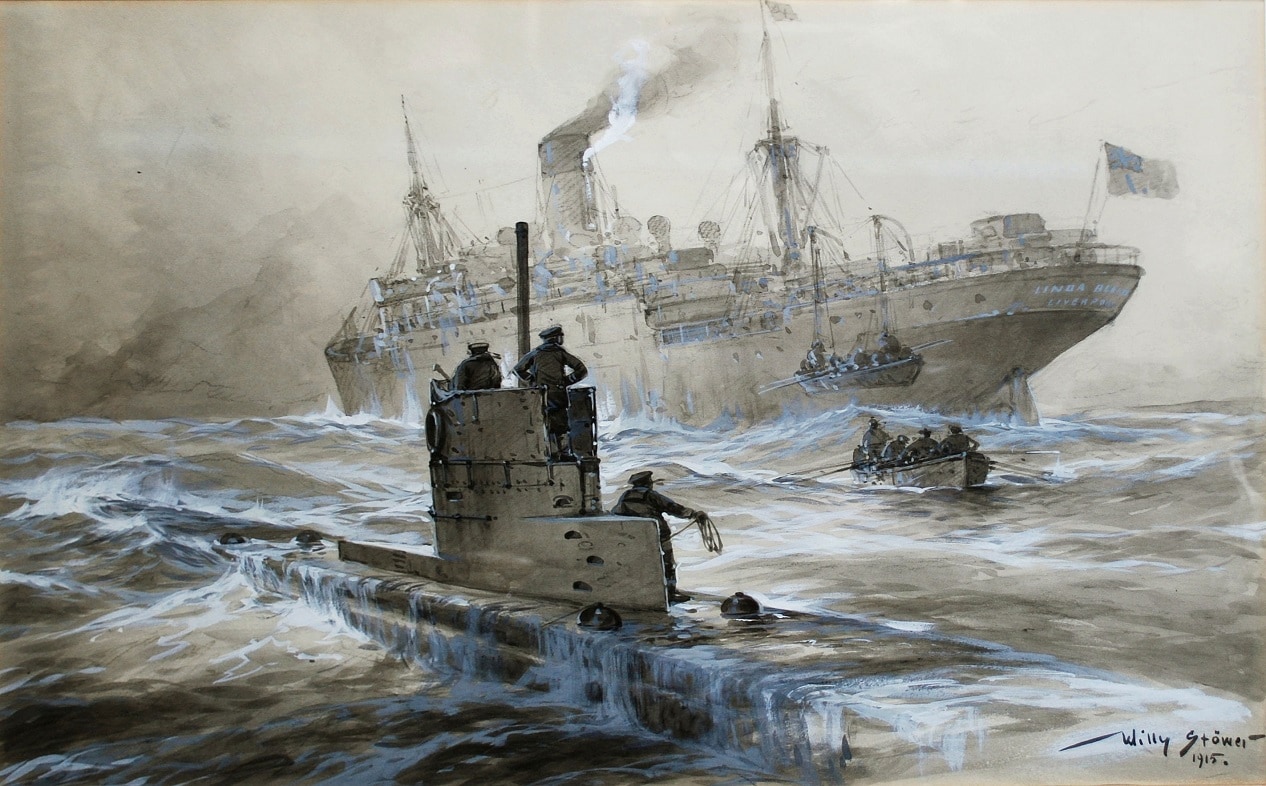A legendary German U-boat, sunk one hundred years ago off the coast of Virginia, has been found in 400 feet of water.
National Geographic has reported that the fabled U-111, which was sunk in 1922, was found earlier in September. Erik Petkovic, a maritime historian, shipwreck researcher, and technical wreck diver found the U-Boat on September 5. The U.S. Navy sunk U-111, which was believed to be in about 1,600 feet of water at the time. However, the wreck was found nestled on the seabed at a depth of just 400 feet.
German U-Boats Surrendered to Allies
U-111 was launched in 1917 as one of 329 submarines serving in the Imperial German Navy during World War One. The vessel conducted three wartime patrols over which she sank three enemy steamers. She was 235 feet long and displaced 830 tons; she was complicated and difficult to maintain; she had an 8,500-mile range and 12 torpedo bays. U-111 was surrendered to the Allies after the Armistice in 1918. In 1919, the British transferred the U-boat to the U.S., who transported the vessel to America for testing and observation before ultimately scuttling the vessel.
U-111 was understood to be the last remaining U-boat, sunk in American waters, and left undiscovered. Reportedly, five German World War I submarines, plus eight World War II submarines, were sunk off of the American shore. The U-111 was not pursued because the Navy had reported it was sunk at such extreme depths, that the U-boat was just too deep to reach. Pekovich, along with his friend Rust Cassway, decided to investigate regardless. Using a 45-foot R/V Explorer dive vessel, the team began investigating the area where they believed the U-111 had sunk. The R/V Explorer found what indeed appeared to be a submarine. The team compared photographs of the R/V Explorer’s findings with photographs of U-111. The two vessels appeared to be one and the same. The team wanted to dive down themselves, but the 400-foot depth of the wreckage was problematic.
Recovering the U-111
Deep water diving is a hazardous undertaking, for several reasons. One reason is the “bends,” a potentially deadly condition. “The Bends may occur if a diver ascends too quickly from a depth, leading dissolved gasses in their blood and tissues to emerge from the solution as bubbles, causing joint pain and rashes, and even paralysis and death,” Newsweek reported. “The deeper the dive, the greater the risk of the bends, and the longer the diver has to spend ascending to avoid it.”
So a wreck located 400 feet beneath the surface of the ocean was especially perilous. Most recreational divers observe a limit of 120 feet. Deeper dives require greater preparation and even specialized equipment.
Nonetheless, that the team was able to find and document the wreckage was significant. “According to maritime historian Aaron Hamilton, this discovery represents a step forwards in submarine technology and wreck-finding,” Newsweek reported.
Historical Perspective
The discovery has also shed light on a forgotten bit of history. “After [World War I] an American crew brought the captured submarine across the Atlantic in a daring solo voyage that required navigating the icy waters where R.M.S. Titanic had sunk seven years earlier,” MSN reported.
“It’s one of those remarkable lost tales of survival,” Petkovic said.
U-111, and its dramatic discovery, harkens to the discovery of U-869. As detailed in Robert Kurson’s Shadow Divers: The True Adventure of Two Americans Who Risked Everything to Solve One of the Lost Mysteries of World War II, U-869 was discovered off the coast of New Jersey in 1991. The team, led by John Chatterton and Richie Kohler, spent years investigating the wreckage, each losing their marriages – and the lives of several team members – in the process. U-869 was located in 230 feet of water, posing significant hurdles to the investigation.
Harrison Kass is the Senior Editor at 19FortyFive. An attorney, pilot, guitarist, and minor pro hockey player, he joined the US Air Force as a Pilot Trainee but was medically discharged. Harrison holds a BA from Lake Forest College, a JD from the University of Oregon, and an MA from New York University. He lives in Oregon and listens to Dokken. Follow him on Twitter @harrison_kass.

